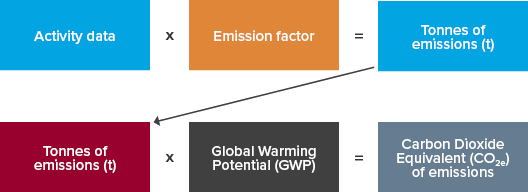GHG Protocol - Measuring Scope 2 emissions
GHG Protocol - Measuring Scope 2 emissions
In the second half of 2023, our sustainability webinar series walks step-by-step through the GHG Protocol. Aletta Boshoff and Dylan Byrne summarise the key messages from the first part of our event, ’GHG Protocol - Measuring Scope 2 emissions’.
What are Scope 2 emissions?
Scope 2 emissions are indirect emissions (i.e. not created on-site) from purchased electricity, steam, heating and cooling. Scope 2 emissions are usually more significant for office-based businesses than Scope 1. They can often be reduced through energy efficiency and conservation.
Reporting obligations for Scope 2 emissions
Scope 2 emissions must be included when determining your carbon footprint using the GHG Protocol, and, in Australia, must be reported as part of your National Greenhouse and Energy Reporting scheme (NGER) obligations.
Suppose you are purchasing electricity from the main grid or another source, and you consume more than 20,000-kilowatt hours of power from the operation of that facility in a year. In that case, you must include these Scope 2 emissions in your annual report to the Clean Energy Regulator.
Differentiated electricity products make reporting Scope 2 emissions more complex
Determining your Scope 2 emissions may be more complex than knowing how many kilowatt hours of electricity you have consumed from your power bill and multiplying that by an average emissions factor. Calculating Scope 2 emissions has become more complex as the supply of electricity grows in complexity and we see more renewable energy in the system, and more individual contracts, such as Power Purchase Arrangements (PPAs). Many entities may, therefore, be determining Scope 2 emissions based on:
- Supplier-specific emission rates
- Energy attribution certificates such as Guarantee of Origin (GOs) or Renewable Energy Certificates (RECs)
- Direct contracts such as PPAs where other instruments or energy attribute certificates such as GOs or RECs do not exist
- Residual mix (e.g. the emission rate left after the above three items are removed from the system).
Calculation methods
Entities can use one of the two methods to calculate Scope 2 emissions for GHG reporting, being the location-based or market-based methods. However, they may be forced to use the location-based method for NGER reporting if electricity is purchased off the main grid.
|
Location-based method |
Market-based method |
|
|
What is it? |
Reflects average emissions intensity of grids on which energy consumption occurs. |
Reflects emissions from electricity that companies have purposefully chosen (via bundled or unbundled certificates). |
|
To which markets does it apply? |
Main grids. |
Markets providing consumer choice, differentiated electricity products or supplier-specific data. |
|
What does the NGER require? |
This method is required when purchased electricity is from the ‘main grid’. |
This method is allowed when the purchased electricity source is not the ‘main grid’. |
The location-based method is what we have commonly seen to date, being the emissions factor from the main grid. It is effectively an average of power generation from various sources, including the proportion of renewable energy in the grid. It is a state-by-state factor and is updated and published annually. States that are producing more renewable energy will have emission factors that are a lot lower per kilowatt hour, while states still reliant on fossil fuels will have higher factors.
The market-based method recognises where an entity is dealing directly with an electricity company at a much more granular level, and there is more specificity around the proportion of renewable energy consumed and the use of offsets. It recognises specific actions taken by the customer and the energy provider to utilise an emission factor that's significantly more relevant and accurate based on the scenario, instead of being based on an average for a much bigger sector.
The pros and cons of these two methods are as follows:
|
Location-based method |
Market-based method |
|
|
Pros |
|
|
|
Cons |
|
|
Calculating Scope 2 emissions
Scope 2 emissions calculations firstly require activity data about electricity usage in kilowatt hours. If power bills don’t contain this information, you may need to obtain metred electricity consumption records.

You then need to determine an emissions factor by reference to the emissions factor hierarchy. If using the location-based method, first use regional or sub-national emission factors. Otherwise use national production emission factors. If using the market-based method, you will need to work your way down the following list until you can find a source for determining the emissions factor:
- Electricity attribute certificates or equivalent instruments
- Contracts for electricity such as PPAs
- Supplier-utility emission rates
- Residual mix (sub-national or national)
- Other grid-average emission factors (sub-national or national).
Finally, you need to calculate:
- Tonnes of emissions emitted: multiply the kilowatts of electricity purchased by the appropriate emissions factor; and
- Carbon dioxide equivalent (CO2e) of emissions: multiply the tonnes of emissions by the Global Warming Potential.
Want to understand more about the GHG Protocol?
Register now for the remaining events in BDO's sustainability webinar series.
If you need a hand in identifying and measuring your Scope 2 emissions, our national sustainability team can help. Contact us today.